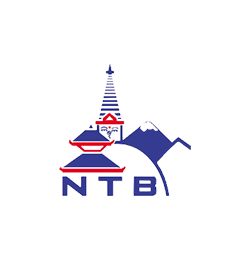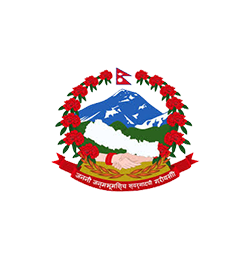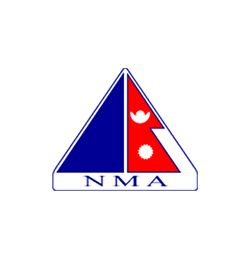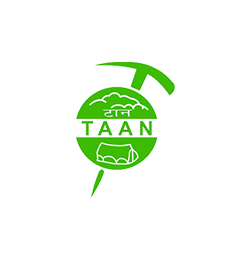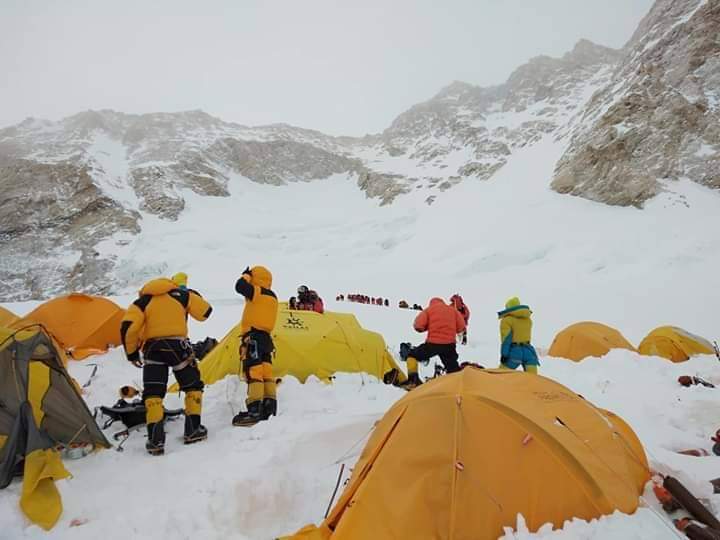
Mt. Everest Expedition, probably the world’s most expensive adventure sports, besides various global sports events and activities like Sky Dive with other highly expensive priced sports. Mt. Everest Mountaineering Expeditions known to be the most costly adventure sports events, where interested climber requires a big budget for the successful ascent to reach on top world number one peak summit at 8,848 meters/ 29, 028 feet high. Climb to the summit of Mt. Everest can be done on both sides of the mountains either North Col in Tibet / China or from the South Col route in Nepal, whichever route and options to choose, it is one of the highest budgeted mountaineering expeditions.
To join for the climb on Mt. Everest Expeditions, where climbers have to be
prepared that it is one of highly costly feat, where large amount budget required as well as proper planning with a number of days and duration required for the successful ascent to reach on top Mt. Everest.
Mt. Everest, a mountain with several names in earlier days before late Irving and Mallory Everest Expedition in 1922, it was known as Peak XV (15), the local Tibetan knows by the name Chomolungma and in Nepal Sagarmatha in both languages means ‘Great Mother’. It was only in 1865 the mountain was christened as Mount Everest, a great honor to Sir George Everest a Surveyor General for British East India Company, since then the name Mt. Everest became most popular and widely used all over the
world.
Mt. Everest is also known as the ‘Third Pole’ as described and named by National Geographic due to the nature and climate of Mount Everest with extremes temperatures on top Mt. Everest summit. Where climbers have to face below -50° C to 60° C (-76° F) freezing cold with low-level oxygen at each high altitude camp. Despite the low temperatures with the biggest obstacle faced by climbers are hurricane-force winds and wind chill factors.

Mt. Everest straddles the border between Nepal and Tibet / China, where
Southern route located in Nepal Far North-East around great Mahalangur
Himalaya range within the district of Solu and Khumbu. Solu-Khumbu a high scenic country populated by famous Sherpa the highlanders and the indigenous tribe of Nepal Mid-Far Eastern Himalaya, located on the most famous and popular trekking and mountaineering route to Everest Base Camp trek and other adventure destination. Mt. Everest in Nepal Latitude at 27, 98 60 65 Longitude 86. 92 26 23 and 27° 59’ 9.8340” North and 86° 55’ 21.44 28” East. Mt. Everest in Nepal known as Sagarmatha, where the first historical ascent to the top of Mt. Everest was from the Nepalese South Col route on May 29th, 1953, climbed by legendry mountaineers Tenzing Norgay Sherpa and Edmund Hillary with British Expedition. Since then it has become more popular among thousands of climbers to conquer
the summit of Mt. Everest from Nepal Southern route. Mountaineers, trekkers, and adventurer enjoy walk and climb to Mt. Everest from
Nepalese side, due to its fascinating cultural villages and impressive custom
where guests are entertained with warm traditional hospitality.
The other best reason due to its scenic and pleasant route to reach the base
camp, the only hardest and tough hurdles for mountaineers from the Nepalese side are encountering massive and notorious Khumbu Ice Fall.
Location of Mt. Everest North Col from Tibet / China:
The first major expedition to Mt. Everest was done from the Tibet side in the early days till present, as Nepal was closed for outside visitors during the Rana regime for hundreds of years till it ended in the early 1950s. In the early day’s expedition used the route to Everest from Tibet / China from North Col Route to reach the summit, the first known expeditions were during the 1920s where Irving and Mallory made it for the summit from Rongbuk in Tibet. The mystery still hangs till today whether they reached the top or not before they died on the way back above 7,000 meters high.
From the Tibet side for Mt. Everest Expedition the cost comes slightly less than from the Nepalese side as well with logistic support, where one can drive all the way to base camp of Mt. Everest. Where yaks laden with expedition load can reach as far to Everest Advance or Camp III at the height of above 6,500 meter high making it much possible to ferry
the equipment for the climb. Mt. Everest North base camp situated South East of Tibetan vast plateau where high Himalayan mountain range borders with Nepal on the southern end of Tibet / China with adjoining Mt. Cho-Oyu close to Mt. Everest. Mt. Everest from Tibet / China side the North Collocated at Latitude 28° 00′ 34.20″ N with Longitude: 86° 55′ 17.99″ East. Various Reasons and Preparation makes Everest Expedition expensive sports:
To reach the summit of Mt. Everest where climbers require to be in perfect
physical fitness and in sound health, whether attempting from South or North Col route, where the height of the summit on both sides of the country Nepal and Tibet / China remains the same.
To climb Mt. Everest requires good logistic support and planning well in advance at least a minimum of 2-3 years ahead, as it is an expensive adventure project where climbers also need strong financial support.
For Everest Expedition beside the size of climbing group members, the budget also depends upon the duration of an expedition to reach on top Mt. Everest and safely back taking minimum a month to maximum three months, longer the itinerary days the cost comes to higher side to organize the climb. For Mt. Everest permit minimum costs comes to the USD $11,000 per climber for the pre-monsoon season from Nepal south side of Mt. Everest, and slightly cheaper in Tibet at about US$ 8000.00. The price for royalty also differs depending upon the season of the year normal route for springtime US $ 11,000. Autumn/fall season US$ 5,500 and Winter Season fee is less US$ 2,750.
Similarly, option for other routes to reach the summit of Mt. Everest from Nepal side @ cost of US$ 10,000.00. For spring and US$ 5,000.00, and US$ 2,500 for the winter season. The average and normal typical cost to join Everest Expedition on a full package from abroad and Western country through adventure agency, where the cost comes to near the USD $ 45,000 and above. But joining directly with local Nepalese agents and tour operators can be from the minimum US $25,000, to the maximum US $40,000.
Besides royalty fees and organizing logistic support from local Nepalese agents for the climb to Mt. Everest, where the Expedition team has to deposit money for waste/garbage fees also on both sides of Everest.
The garbage or waste deposit which is refundable after bringing back and
declaring the waste items to a proper disposal site, or handing to respective
Government authorities. The cost for Mt. Everest climb also depends upon the size of a group with more climbers in the group, where the cost comes much lower, at present many local or abroad adventure agency and tour operators do have Mt. Everest Expeditions group joining fix departures for eager and interested climbers.
Most of the package for Everest Expedition excludes and does not include
a royalty fee of $11,000 for the peak permission, garbage deposit, and climbing incentive or bonus of local climbing guide provided by the local tour operator. Other expenses include wages, equipment, and insurance for a team of Sherpa guides support which is highly needed for a safe and successful climb. There are various ways that one can plan and attempt the expedition with the minimum number from 4-10 of climbing members or maximum numbers of more than 10 to 20 people in the group.
For the larger groups, the cost comes to a reasonable amount while for an individual and a minimum number of climbers the expedition to Mt. Everest becomes much expensive, with more climbing members much better to make the expeditions affordable.
Logistic support and planning for Mt. Everest Expeditions
The main objective on Mt. Expeditions is proper planning ahead and with
excellent logistic support to make the climb safe and a huge success.
To make the climb a winner and successful conquest either from Nepal South Col or from Tibet / China North Col, the expedition team has to book and plan for the climb well in advance at least a few years ahead, similarly on Tibet side as well. Expeditions team have to book through local agents of the respective country’s Government the law is that it has to be authorized and licensed local agency in Nepal, for both North and South. That includes all logistic support required for Everest Expedition to make the climb a huge success which will be taken care of by the Nepalese counterparts in
Kathmandu as well for Tibet’s side. On booking the expedition team has to mention and declare the route of the climb and season with time duration as well a number of climbers in the group so that the local counterpart and ground handling agent will make the arrangement according to your request with a number of itinerary days.
Most commercial mountaineering expedition since past early years till present runs and manage big-budget expedition and exploration through sponsorship, getting financial support from various interested and renowned companies or private enterprises to make the expedition possible. That can cover most of the cost and expenses required for the expedition, after getting the right positive support, then climbing group leaders and the main person of the expedition starts and get active in full preparation for Mt. Everest Expedition. In return Expeditions will be tagged as a brand ambassador for respective companies and sponsors, carrying names and products to the top of Mt. Everest. After final preparation and getting well organized then depart for Nepal to land at Kathmandu international airport. Where local counterpart agents in Kathmandu will do all necessary paper works to obtain permits for the climb with other related documents required for the expedition.
Major Logistic requirement and Set Up makes the Expedition more expensive
Major logistic backups with tons of equipment the major factor of
mountaineering expeditions make the climb more costly and expensive besides major climbing fees and other related cost. The main backbone of all Mountaineering Expeditions camping and climbing equipment includes healthy hygienic foods and medication to ferry all the way to base camp and beyond to different higher designated camps. Camping equipment at base camp and onward includes;
Cook Tent: Good size to allow the cook to set up a safe and hygienic workplace. This is the most important tent for you to keep the staff and climber fit and healthy.
Mess / Dining Tent: Capable of seating 20 comfortably or as the size of the group, with enough space and rooms for food barrels and other necessary preparation.
Medical Tent: Sturdy, strong against wind, and worthy with enough room to set up work tables. Communications Tent: Ample room, important as it will be used frequently to monitor the commotion and activities of the climb and for emergency communication as well to contact for the nearest medical help when required for immediate evacuation.
Storage Tent: Organization is the key for Climbing Everest from the North or from the Southside. Plus it is widely known that equipment goes missing if not kept away from the locals.
Toilet and Shower Tents: Important to set Toilet tents at base camp, where
shower tents as options.
Two Men Strong Tents: to be used at base camp and onward to higher camps.
Higher altitude Mess Tent: To set up at ABC and then back down, this will be manned and taken care of by an assistant cook, serving plenty of soup, tea, and carbs. Hygiene being of the utmost importance here.
It should be comfortable, making it enjoyable for people to stay in and rehydrate and fuel up for the next climb up.
Climbing members can also share tents for overnight stays, when required, or use the mess tent to bivy in. Besides other necessary gear for the climb requires various items as follows: Many tarps for a ground cover in the mess, medical and coms tents. Chairs with backs, like a director’s chair. Comfort has its place at BC and ABC Heaters for mess tents and Generators. A lot of rope to tie up tents in all camps to save against heavy winds. Spider’s webs to cover storage boxes of equipment and foods. Other major equipment and options to carry: High Altitude Sherpa guide to carry and set up camps as well to make the path on route various camps and to guide you safe all the way to the summit and back. Personal tents on and off the mountain, bottled oxygen for personal need. Rope, Ices Screws, Snow stakes, personal climbing gear, and warm clothing. Strong healthy Porters and Yaks on both sides of Mt. Everest.
Expedition – Climbing Equipment an important item that adds the cost: Sleeping Bag 1 for Base Camp and for Climbing, Mattress for Base Camp for Climbing, Ruck Sack, Head Light (Torch), Koflach / One Sport Boot, pair of Gaiter. Personal warm clothing, Sun and Snow Glass, Water Bottle & Thermos, Swiss Knife, Gloves Down & other for Climbing (5 – 6 Pairs). Including Down and Gortex Suit with Crampons, Karabiner 4-5 Pcs (lockable & without lock), Jumar, Down Rippling (Descender) 1 Pcs (Air ring), Cap for Climbing & for Summit, Ceiling, Inner clothing Trouser & Vests and Batteries Oxygen, Regulator & Masks 4 + 2 Oxygen Bottles per member The Sherpa who would not use the Oxygen for Summit, the Group will need to pay the Oxygen equivalent money to him. Fixed Rope: 15,000 – 16,000 m, when not sharing with others 2,000 – 3,000 m. when sharing with other Main Rope: Thinner (6-7mm) for Summit – 200 m. 11 – 12mm. for the rest of the climbing – 100 m. High Tent Nothface or Salewa: 1 per 2 pax – Separate for Sherpa, Dining Tent for Camp II, EPI Gas 150 Pcs – 250 gms. PI Gas Stove 10 Pcs and Walkie Talkie, Snow Shovel 4 Pcs, Ice Axe, Ice Hammer 2 Hammer per team, Ice Screw 60 Pcs, Rock Pikdung 20 Pcs, Karabiner 50 Pcs, Snow Bar 100 Pcs and Medicines. The number of days to reach base camp also makes up with the expenses.
The above mention is the most important item to support logistic support to make the climb successful. The other factor that adds to Everest expedition expenses is paying full package to a local company that includes hotel accommodation in Kathmandu on a bed and breakfast basis.
Hotel expedition also depends upon the choice of members from simple tourist standard to five-star hotels. Domestic airfare Kathmandu-Lukla and back, meals, and accommodation on route to base camp and back to Lukla.
Wages of Trekking and Climbing guides including camping staff and cooks include transportation allowance food/accommodation on route trek as well as medical insurance.
All major Mountaineering Expedition will be accompanied by Nepalese
Government Liaison Officer where all expenses for Liaison officer borne by The expedition, that includes transportation, daily wages, meals, accommodation on route trek to base camp and back. Special incentive and bonus on reaching the summit with the guidance of Sherpa guide, extra cost for staff,, and climbing guide equipment allowance. Use of porters from Lukla to Base Camp and back as well using Yaks or other animals to carry camping, climbing, and members’ luggage. Similarly Everest Expedition from Tibet Northside where transportation and accommodation required besides special permit to enter Tibet and Climbing fee controlled by CTMA (China Tibet Mountaineering Association)

